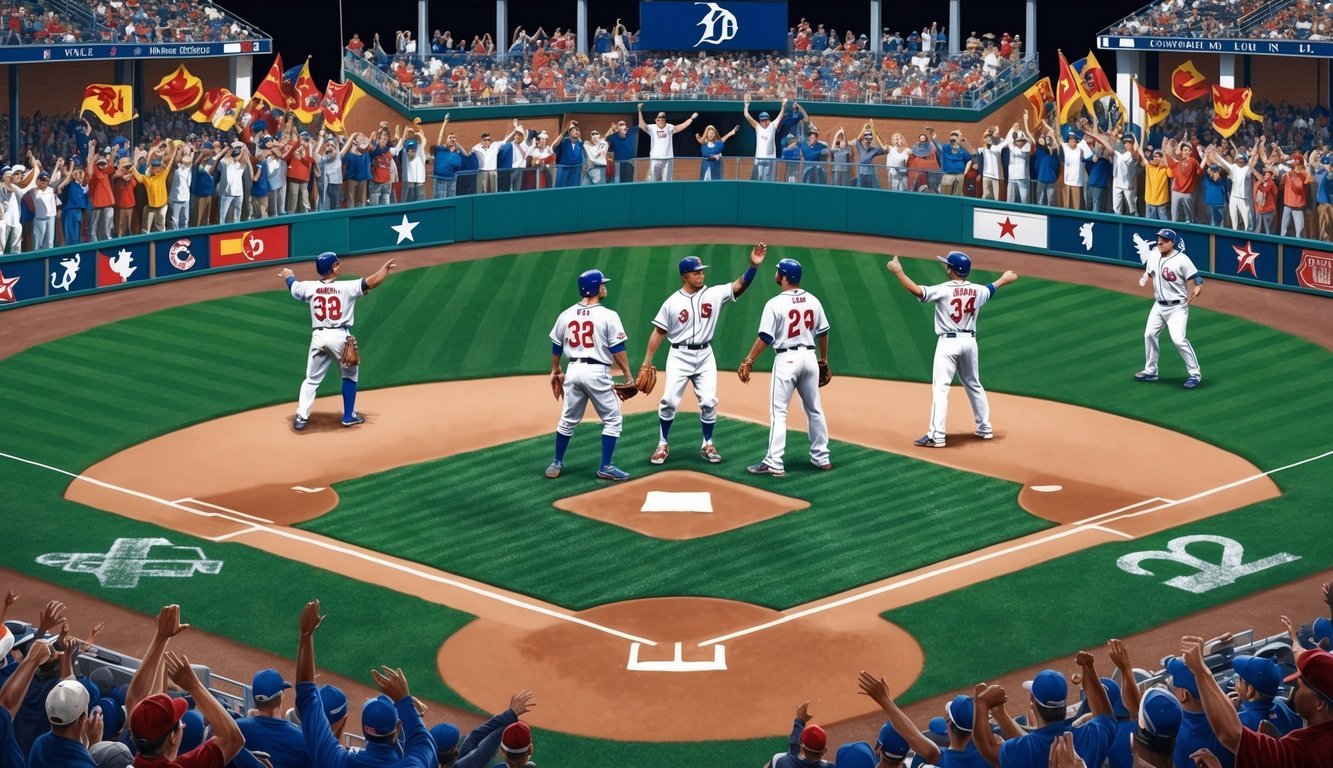Baseball enthusiasts often debate the finer points of the game, from pitching strategies to fielding techniques.
One area that sparks particular interest is base running.
While first base gets plenty of attention, second base holds its own special place in the hearts of fans and players alike.
Second base represents a critical position on the diamond.
Skilled defenders with quick reflexes and a strong throwing arm typically occupy this base. This base is often the pivot point for double plays and serves as a key staging area for runners looking to score.
Players who can consistently reach second base are highly valued for their ability to get into scoring position.
The journey from first to second base requires speed, timing, and baseball smarts.
Runners must carefully watch the pitcher’s movements, looking for any opportunity to steal or advance on a hit.
Coaches often focus on teaching proper sliding techniques to help players safely reach second base while avoiding tags.
Understanding the nuances of second base play can make a significant difference in a team’s offensive success.
The Basics of Baseball
Baseball is a beloved sport played on a diamond-shaped field with four bases.
The main objective is for players to score runs by safely reaching home plate.
Players take turns batting and fielding, with each team alternating roles every half inning.
There are various strategies involved, and understanding the game’s intricacies, such as the baseball position number meanings, can significantly enhance a player’s effectiveness on the field.
Each position has a specific role, contributing to the team’s overall performance and defense against the opposing team.
Each team takes turns batting and fielding.
The batting team tries to hit the ball and run around the bases, while the fielding team attempts to prevent runs.
The four bases are arranged in a square:
- First base
- Second base
- Third base
- Home plate
Players must touch each base in order when running.
Reaching home plate safely scores a run for their team.
The fielding team positions players strategically around the field.
Key positions include:
- Pitcher
- Catcher
- Infielders (first base, second base, shortstop, third base)
- Outfielders (left field, center field, right field)
A game typically lasts nine innings, with each team getting a chance to bat in each inning.
The team with the most runs at the end wins.
Special plays like doubles (reaching second base on a hit) and stolen bases add excitement to the game.
Teams like the Yankees have become iconic in baseball history.
Understanding Second Base in a Relationship
In the world of dating, “second base” borrows from baseball terminology to describe a level of physical intimacy.
It typically refers to touching and fondling above the waist.
Second base usually involves more intense kissing and exploring with hands.
This can include caressing the upper body, such as the back, arms, and shoulders.
For many couples, second base also encompasses touching the chest area.
This may involve fondling breasts or nipples through or under clothing.
It’s important to note that definitions can vary between individuals and cultures.
What constitutes second base for one person might differ for another.
Communication and consent are crucial when progressing to this level of intimacy.
Partners should feel comfortable discussing boundaries and preferences.
Remember, there’s no rush to “round the bases” in a relationship.
Each couple should move at their own pace, focusing on mutual comfort and enjoyment.
Cultural Significance and Communication

The concept of “second base” in dating and relationships carries different meanings across cultures.
Language and cultural norms shape how people discuss and perceive physical intimacy.
Language and Intimacy
In English-speaking countries, baseball metaphors often describe romantic progression. “Second base” typically refers to touching above the waist.
This shorthand allows people to discuss intimate matters discreetly.
Some cultures use similar sports analogies, while others have unique expressions.
In French, “French kissing” describes deep kissing, though the term isn’t used in France itself.
Many languages borrow this phrase.
Bilingual dictionaries sometimes struggle to translate such culturally-specific terms accurately.
Worldwide Interpretations
Different cultures have varying comfort levels discussing physical intimacy.
In some Asian countries, public displays of affection are less common.
This impacts how people communicate about relationship milestones.
Spanish-speaking countries may use dancing metaphors instead of baseball terms.
In Japan, indirect language is often preferred when discussing romantic topics.
Some cultures focus more on emotional closeness rather than physical stages.
Understanding these differences helps avoid misunderstandings in cross-cultural dating.
It’s important to recognize that expressions like “second base” aren’t universal.
Navigating Physical Intimacy and Consent

Clear communication and mutual agreement are essential when progressing to more intimate activities.
Partners should feel comfortable expressing their desires and limits.
Importance of Consent
Consent is the foundation of any healthy intimate encounter.
Both partners must freely and enthusiastically agree to each activity.
Verbal confirmation is ideal, but nonverbal cues can also indicate willingness.
It’s crucial to check in regularly and respect a partner’s right to change their mind at any time.
Consent for one activity doesn’t automatically extend to others.
Each new step requires renewed agreement.
Alcohol or drugs can impair judgment, so it’s best to avoid intimate activities when intoxicated.
Sober minds make clearer decisions about boundaries and desires.
Comfort and Boundaries
Everyone has different comfort levels with physical intimacy.
Some may feel ready to progress quickly, while others prefer a slower pace.
Neither approach is wrong – it’s about finding what works for both people.
Open conversations about boundaries help build trust and understanding.
Partners should discuss likes, dislikes, and any off-limits areas or activities.
This creates a safe space for exploration within agreed limits.
It’s normal for comfort zones to expand over time as intimacy grows.
However, there’s no need to rush.
Taking things slowly allows deeper connections to form naturally.
Respecting a partner’s boundaries shows care and consideration.
If someone expresses discomfort, it’s important to stop immediately and check in.
Progression of Intimacy in Relationships

Relationships often follow a natural progression of intimacy, much like advancing through bases in baseball.
First base typically involves kissing and light physical contact, helping partners gauge their chemistry.
As couples round second base, they explore more intimate touching above the waist.
This stage builds trust and deepens emotional connections.
Third base takes things further, with partners engaging in more intense physical activities.
It’s an exciting time of discovery and fun as the relationship grows.
Home run, or fourth base, represents sexual intercourse.
This milestone requires open communication and mutual consent from both partners.
Each person’s journey through these “bases” is unique.
Some may take their time, while others progress more quickly.
The key is comfort and readiness for both individuals.
